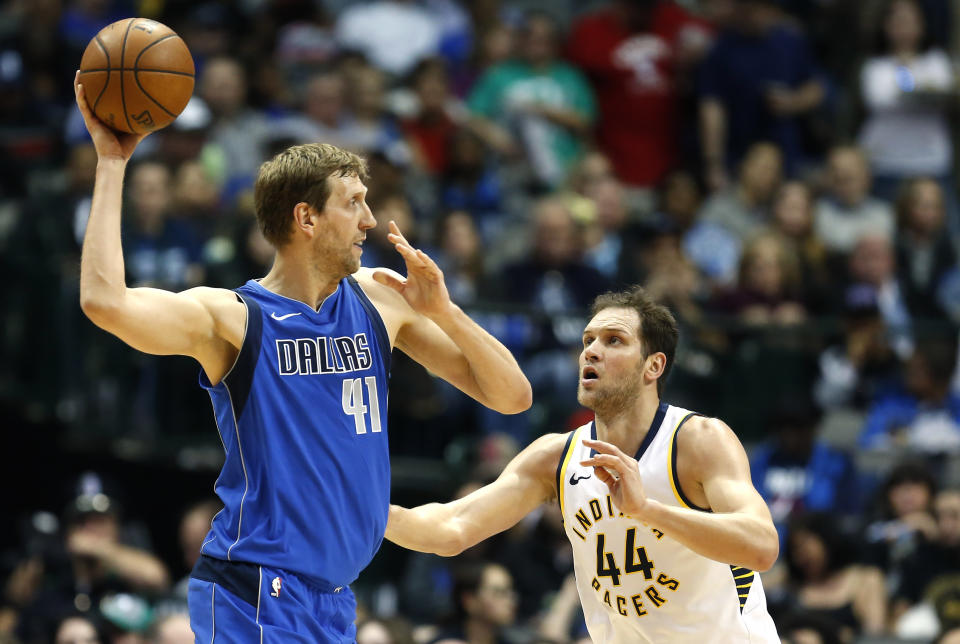Are NBA teams utilizing 'inverse analytics' to aid tanking?

Losing in today’s NBA has spawned a competitive niche industry. As teams tank for prime positioning in June’s NBA Draft, the race to the bottom has heated up. The top-heavy body of the 2018 Draft has added an additional incentive for the jostling. ESPN’s Brian Windhorst explained on Monday’s Outside the Lines, that this has led to teams turning competitive losing into a literal science.
Are we seeing a new way to tank in the @NBA? pic.twitter.com/dQTsyuajqe
— Outside The Lines (@OTLonESPN) February 26, 2018
“What would seem to up the ante this year is more active tanking. There are entire analytics departments that are established out there to find ways to get the best five players on the court in any situation and the coaches are given reams of data on this to help them prepare,” Windhorst explained. “And what NBA executives have detailed to me is that there is some inverse analytics going on where coaches are potentially being given data on what lineups to play may be not be successful and we’re certainly seeing that with the Dallas Mavericks.”
Windhorst also spoke to an anonymous NBA executive for an ESPN.com feature who discussed the reverse engineering of analytics that tanking teams practice.
Via ESPN:
One executive told ESPN that he suspects the use of “reverse analytics.” Instead of using data to determine which lineups may be most effective in a certain matchup, coaches may be provided with data that could yield the opposite.
“It’ll be like ‘Mission: Impossible,'” the executive said, tongue partially planted in cheek. “The coaches will get the data on paper that will self-destruct right after they read it.”
Windhorst specifically identified how Carlisle inserted his tank lineup into the final five minutes of a close contest against the Los Angeles Lakers on Feb. 10. Down 116-117, Carlisle opted to play recently-acquired forward Doug McDermott, Dennis Smith Jr., Max Kleber and Salah Majri over more established veterans Dirk Nowitzki, Harrison Barnes, J.J. Barea and standout rook Dwight Powell. However, in that circumstance the Mavericks pulled out a pyrrhic victory over the Lakers, who don’t owe their 2018 pick to Philadelphia or Boston.
That foursome played a total of 12 minutes together in the first three and a half months but has recently become the Mavs’ closing lineup of choice. It’s a group that had blown a 10-point lead in the final 4:42 of a loss to the LA Clippers a couple of games earlier and was minus-38 in 24 February minutes before managing to close out the Lakers.
…
The Mavs have the league’s fewest clutch wins (eight) and most clutch losses (29). Their clutch point differential (minus-90) is the worst in the league by 31 points. Their clutch net rating (minus-31.2 points per 100 possessions) is the worst in the league over the past decade aside from two exceptions: the 2015-16 Philadelphia 76ers, who earned them the right to draft Ben Simmons with the first overall pick; and the 2010-11 Minnesota Timberwolves, whose reward was drafting bust Derrick Williams at No. 2 overall.
Mark Cuban was recently fined $600,000 for openly expressing his opinion losing was in Dallas’ best interests and Windhorst went out of his way to single them out. However, they aren’t alone in the submarine race to the bottom. Chicago is sitting Zach Lavine on back-to-backs, sat him out a month after he reportedly was ready to play, has begun starting David Nwaba and encouraged rookie Lauri Markkanen not to catch a flight to Sacramento for a game the next day. They also frantically shopped Nikola Mirotic after he returned to the active roster and led Chicago on a seven-game winning streak.
Atlanta gutted their entire roster in the offseason, then waived Marco Belinelli and Ersan Ilyasova for good measure. There are teams such as the Memphis Grizzlies and Orlando Magic are just teams that have fallen between hard times and bad luck. Then, there are the Kings, who would probably become a playoff team if they started using what they thought were “inverse analytics.”
Lottery reform is coming to the draft next season, but it doesn’t change the reality of the the NBA. In a 32-team, soft capped league that has seen Philadelphia team-build by accumulating cheap rookie contracts, it shouldn’t be a surprise that franchises are embracing rock bottom as a trampoline into relevance.
– – – – – – –
DJ Dunson is a writer for Yahoo Sports. Have a tip? Email him at dunsnchecksin@yahoo.com or find him on Twitter or Facebook.

